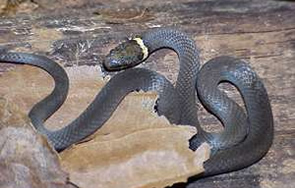
Diadophis punctatus
Photo
by ME Dorcas
Description: The ringneck snake gets its name from the distinctive, light yellow or orange ring around the neck. The coloration of the ring contrasts sharply with the dark gray or black back of this snake. The belly of the ringneck is either yellow or orange, often with a row of black spots running down its center. Ringnecks from the Coastal Plain usually have incomplete rings around their necks.
Feeding/Diet: Ringneck snakes feed on a variety of prey, including earthworms and salamanders.
Habitat/Range: Ringneck snakes are often forest dwellers, usually living within rotting logs or in leaf litter. They can frequently be found in flowerbeds.
Reproduction: Ringneck snakes lay 2–7 eggs during the early summer.
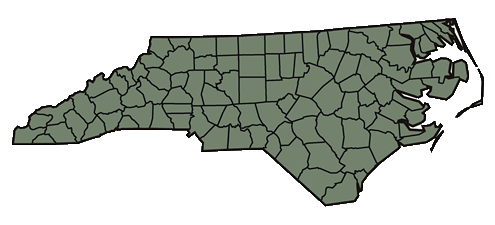
The shaded region represents the range of the ringneck snake in North Carolina.
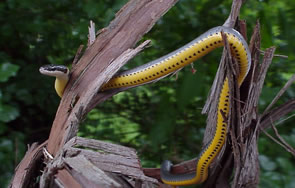
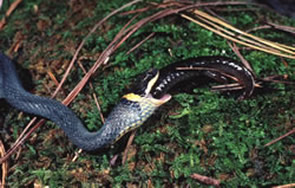
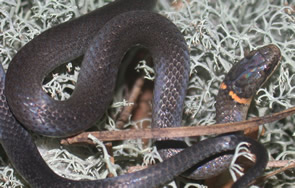
Ringneck snake eating a salamander.
Photo
by RW Van Devender
Note the incomplete ring on this ringneck from the Coastal Plain.
Photo by JD Willson
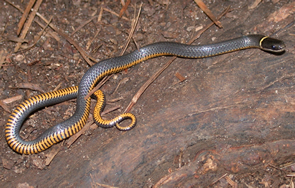
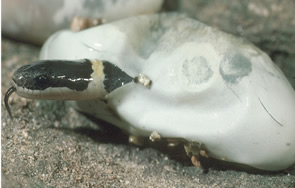
Photo by RW Van Devender
This website created by: J. Willson, Y. Kornilev, W. Anderson, G. Connette and E. Eskew.
For comments or questions contact M. Dorcas: midorcas@davidson.edu.
M. Dorcas homepage: http://bio.davidson.edu/dorcas
Davidson College, Davidson, North Carolina 28035-1719.
Text and maps from: Dorcas, M. E. 2004. A Guide to the Snakes of North Carolina. Davidson College - Herpetology Laboratory, Davidson, NC. – Copyright by Michael E. Dorcas.
Partial Funding for this website provided by a Associate Colleges of the South, National Science Foundation, and Duke Energy.
